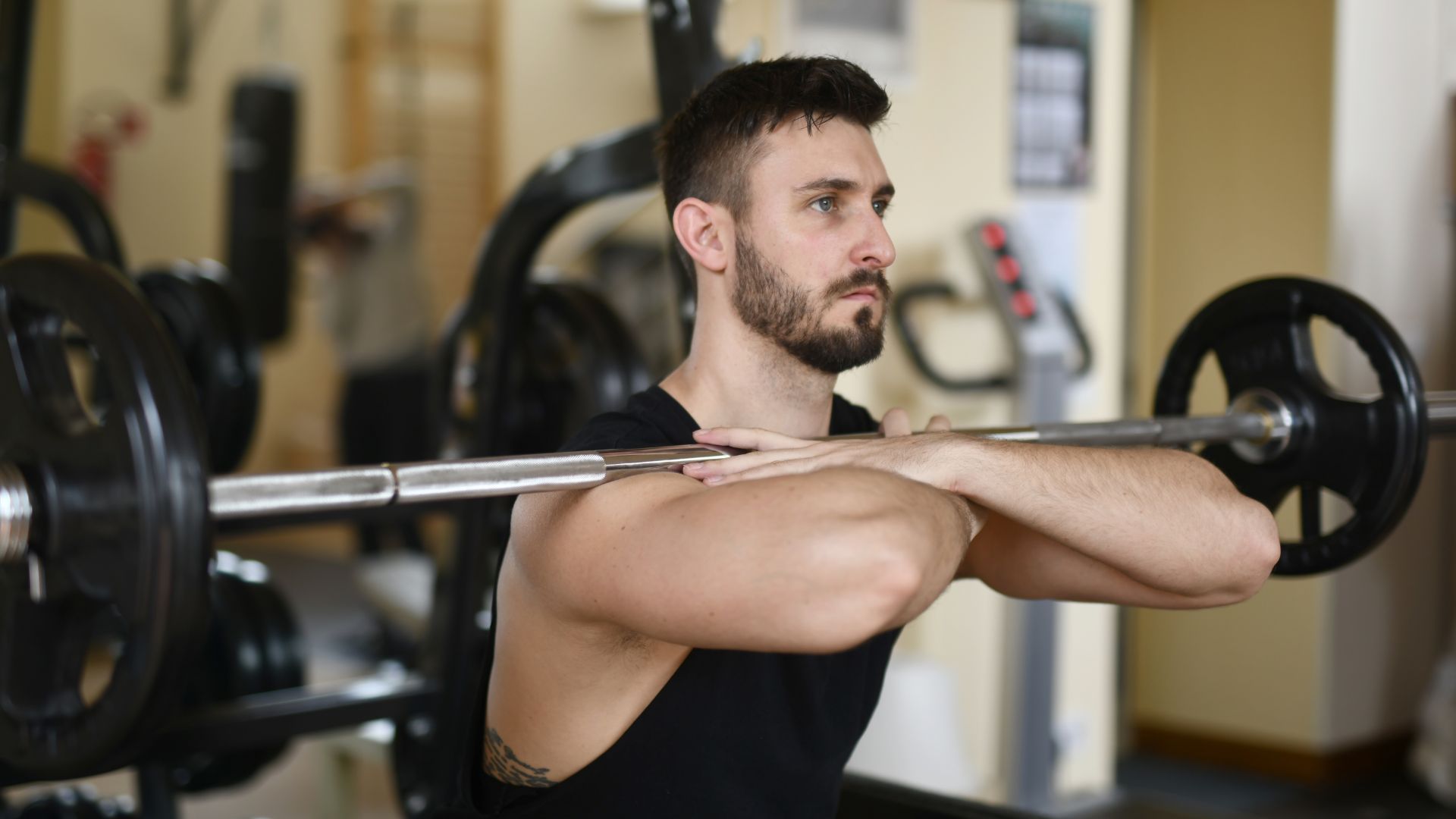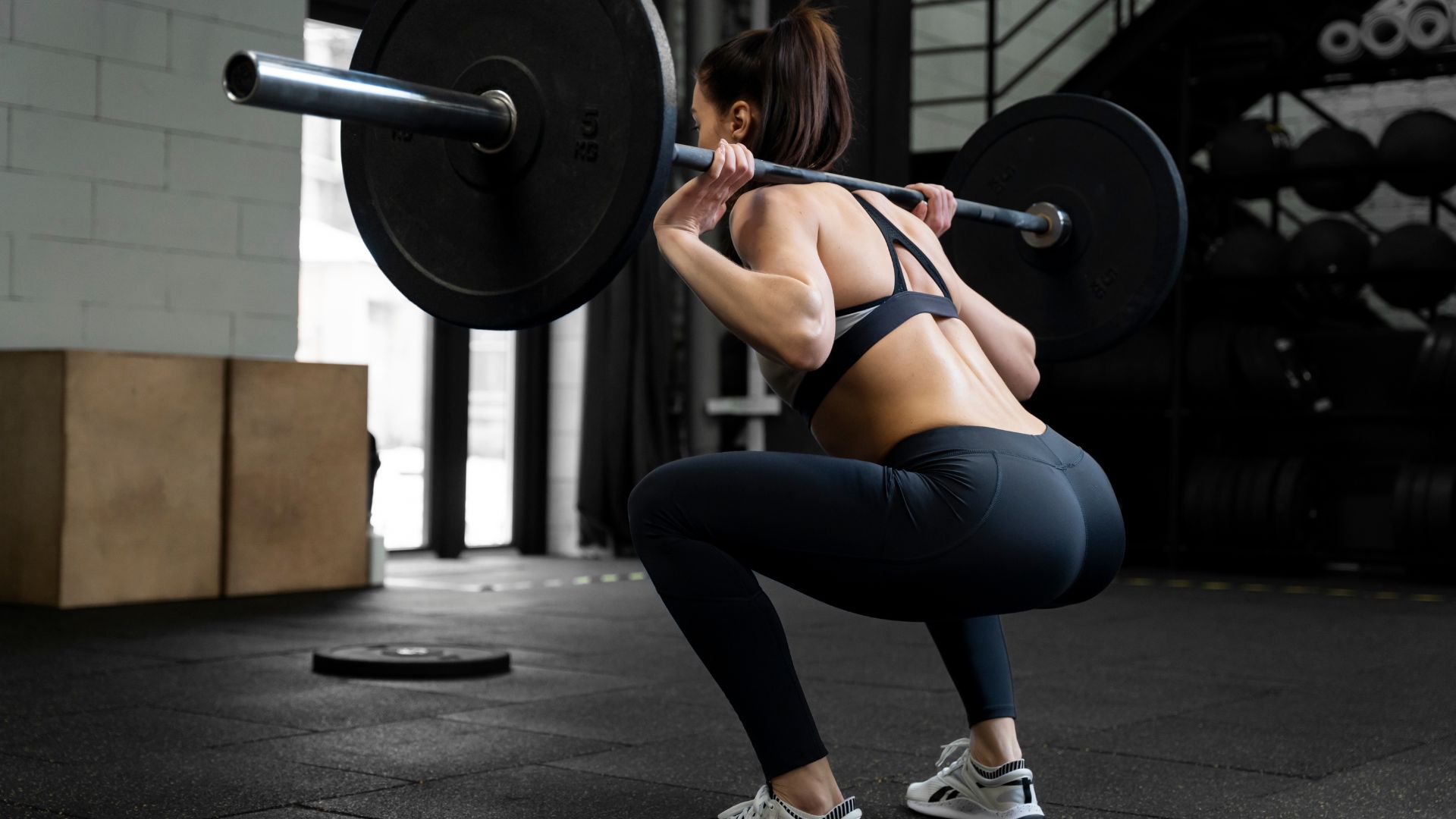So you’re ready to take your squatting game to the next level? Want to know how much weight you should go for? Get ready to find out.
How strong are you currently? What’s your current squatting max? How many sets or reps can you comfortably perform? Is your form up to par? Have you done any strength training before? What level of intensity will you be comfortable with?
If you want to break through your fitness plateau, unlock gains and build strength like never before. When it comes to weightlifting, one of the most important exercises is the squat.
But how much weight should you be able to lift without a weight belt? What are the risks of attempting to squat more than you‘re capable of? What tips do experienced lifters have on form and technique while squatting? Let‘s find out.
The amount of weight you should squat without a weight belt depends on your individual strength and fitness level. It’s important to start with a weight that feels comfortable and allows you to maintain proper form throughout the exercise. Generally, a good starting point is to squat with a weight that is around 50-60% of your one-rep maximum (1RM), which is the maximum amount of weight you can lift for one repetition with good form. As you become more comfortable with the exercise and your strength improves, you can gradually increase the weight. However, it’s important to always prioritize proper form and technique over the amount of weight lifted.
Depends on your individual strength and fitness level.
The amount of weight you can squat without a weight belt is dependent on several factors, including your current strength and fitness level.
If you’re a beginner, you may find that starting with a lighter weight allows you to focus on proper form and technique, which is crucial for preventing injury and building strength.
On the other hand, if you’re more experienced and have been squatting for a while, you may be able to handle heavier weights.
However, it’s important to remember that everyone’s strength levels are different and what works for one person may not work for another.
It’s also important to consider your overall fitness level when determining how much weight to squat without a weight belt.
If you’re new to strength training or have not been exercising regularly, it may be best to start with a lower weight and gradually increase as you build strength.
it’s important to listen to your body and prioritize proper form and technique over the amount of weight lifted. Gradually increasing the weight over time can help you build strength and prevent injury.

Start with a weight that feels comfortable and allows you to maintain proper form.
When starting a new exercise like squats, it’s important to begin with a weight that feels comfortable and allows you to maintain proper form throughout the exercise.
Proper form is crucial for preventing injury and maximizing the effectiveness of the exercise.
If you start with a weight that is too heavy, you may find it difficult to maintain proper form, which can lead to injuries such as back pain, knee pain, or strains.
On the other hand, if you start with a weight that is too light, you may not challenge your muscles enough to see results.
Starting with a weight that feels comfortable allows you to focus on proper form and technique, which can help you build a strong foundation for future workouts.
As you become more comfortable with the exercise and your strength improves, you can gradually increase the weight.
By starting with a weight that feels comfortable and allows you to maintain proper form, you can help prevent injuries and ensure that you are getting the most out of your workout.
A good starting point is around 50-60% of your one-rep maximum generally.
Your one-rep maximum (1RM) is the maximum amount of weight you can lift for one repetition with good form.
Generally, a good starting point for squatting without a weight belt is to use a weight that is around 50-60% of your 1RM.
This is a good starting point because it allows you to challenge your muscles without putting too much strain on your body.
By using a weight that is around 50-60% of your 1RM, you can focus on proper form and technique while still building strength.
However, it’s important to remember that everyone’s 1RM is different, so this may not be the perfect starting point for everyone.
Some people may need to start with a lower weight, while others may be able to handle a heavier weight. It’s important to listen to your body and adjust the weight accordingly.
As you become more experienced and your strength improves, you can gradually increase the weight. This will help you continue to challenge your muscles and build strength over time.
== >> Go here and buy the right weightlifting belt that you need for your workout routines
Gradually increase the weight as you become more comfortable
As you become more comfortable with squatting without a weight belt and your strength improves, you can gradually increase the weight you are lifting.
By gradually increasing the weight, you can continue to challenge your muscles and build strength over time.
It’s important to increase the weight gradually to prevent injury and ensure that you can maintain proper form and technique.
A good rule of thumb is to increase the weight by no more than 5-10% each week, depending on your individual strength and fitness level.
It’s also important to listen to your body and adjust the weight as needed. If you find that you are struggling to maintain proper form or experiencing pain or discomfort, it may be necessary to decrease the weight or take a break from squatting for a period of time.
By gradually increasing the weight over time, you can continue to make progress and reach your fitness goals while minimizing the risk of injury.
Prioritize proper form and technique vs. the amount of weight lifted always.
Proper form and technique are crucial when performing squats without a weight belt.
While lifting heavy weights can be impressive, it’s important to prioritize form and technique over the amount of weight lifted.
Maintaining proper form and technique helps to prevent injuries and ensure that you are targeting the correct muscles.
For example, if your knees are not properly aligned or your back is not straight, you may be putting unnecessary stress on your joints and muscles, which can lead to pain and injury.
By prioritizing form and technique over the amount of weight lifted, you can also ensure that you are getting the most out of your workout.
Proper form and technique help to ensure that you are targeting the correct muscles and maximizing the effectiveness of the exercise.
Focusing on form and technique can help you build a strong foundation for future workouts. By developing good habits early on, you can prevent bad habits from forming and ensure that you are able to continue to make progress over time.
While increasing the weight lifted is important for building strength, it’s critical to prioritize proper form and technique to prevent injuries, maximize the effectiveness of the exercise, and build a strong foundation for future workouts.
When starting to squat without a weight belt, it’s recommended to use a weight that is around 50-60% of your one-rep maximum (1RM). Here’s a chart that can help you determine the appropriate weight to use:
| One-Rep Maximum (1RM) | Starting Weight (50-60%) |
|---|---|
| 100 lbs | 50-60 lbs |
| 150 lbs | 75-90 lbs |
| 200 lbs | 100-120 lbs |
| 250 lbs | 125-150 lbs |
| 300 lbs | 150-180 lbs |
| 350 lbs | 175-210 lbs |
| 400 lbs | 200-240 lbs |
Remember, it’s important to always prioritize proper form and technique over the amount of weight lifted. As you become more experienced and your strength improves, you can gradually increase the weight by no more than 5-10% each week.
== >> Go here and buy the right weightlifting belt that you need for your workout routines
Conclusion
In conclusion, when starting to squat without a weight belt, it’s recommended to use a weight that is around 50-60% of your one-rep maximum (1RM).
As you become more experienced and your strength improves, you can gradually increase the weight by no more than 5-10% each week.
However, it’s important to always prioritize proper form and technique over the amount of weight lifted.
Proper form and technique help to prevent injuries, ensure that you are targeting the correct muscles, and maximize the effectiveness of the exercise.
By focusing on form and technique, you can build a strong foundation for future workouts and continue to make progress over time.

Hey there, it’s Mike Rrsq, the Editor-in-Chief over at Jsquat.com, and I’m absolutely obsessed with all things squat fitness! I’ve been lucky enough to get some serious recognition for my work in this field. With a solid background in the fitness and wellness industry, I’ve been there right from the get-go, helping shape this website into what it is today.
You see, I’m not just the boss around here; I’m also a passionate contributor. I love sharing my insights through my articles, and trust me, they’re not your run-of-the-mill stuff. Each piece I write is a labor of love, filled with my expertise and real-world experience in the fitness universe. So, if you’re into fitness and looking for some inspiration, you’re in the right place!

